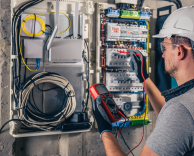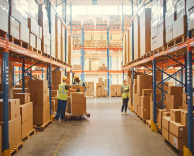Best Practices to Avoid Contaminants While Topping Up Lubricants
Introduction
Lubrication is the key to keeping a machine running smoothly and lasting as long as needed. While liquid lubricant maintenance and replenishment are normal processes in industries, people often overlook the aspect of the cleanliness of the oil canisters and containers used for topping up. This carelessness may eventually result in particle contaminants entering the system that do more harm than the good you intended.
In this article, we’ll explore the best practices to prevent Here, we look at the top measures you can take to minimize the chances of contamination during lubricant top-ups and why clean lubricants are vital to the health of your machinery.
The Importance of Green Lubricants
Clean lubricants are the bloodstream of industrial machinery. This improves efficiency, decreases wear and tear, and prevents parts from corrosive elements. Nonetheless, even tiny particle impurities can affect the function of a lubricant and cause:
- Increased component wear.
- Reduced equipment lifespan.
- Inefficient and Expensive Downtime
Therefore, the cleanliness of lubricant is not only one of the best practical works, but also one of the indispensable conditions for machinery work in the best state.
Risks of Improper Topping-Up Practices
Inadequate lubricant management when topping up can bring moisture:
1.Foreign Matter: Dirt, dust, or debris finds its way into open containers or systems that are not sealed properly.
2.Water Contamination: Water can get into unprotected containers, causing emulsified oils.
3.Cross-Contamination: Using lubricants from different suppliers, with different tags and/or drawings, can cross-contaminate the products, leading to of usable properties, thus creating inefficiency.
4.Corrosion: Particles can accelerate the corrosion of internal parts, leading to a shorter lifespan of the engine parts.
For More Information about Minimac Systems - Click Here.
Best Practices for Oil Cans and Top-Up Containers
1. Keep Your Containers Sealed
It is best to always only use airtight containers. This is to keep all contaminants like dust, dirt, and water from entering the lubricant. Always quickly seal the containers again after use.
2. Avoid Galvanized Containers
Lubricant storage in its die plate. Thus, galvanized cans are magnets for dirt ~ not good for lubricant storage. Zinc from galvanized coatings can also migrate into the oil, where it can cause adverse chemical reactions, degrading lubricant performance.
3. Dedicate and Label Your Containers
Containers are designated for individual lubricant types or classes of compatible lubricants. Using accurate labels reduces the risk of cross-contaminating lubricant types, which degrades performance ability and damages machinery.
4. Use Designated Lockers
Never leave oil cans and containers near a machine since they are open to dust, dirt, and debris. When not in use, place containers in lockers/cabinets so that they are clean and not exposed to environmental factors, instead of leaving them out.
5. Regular Cleaning of Containers
Check containers regularly for contamination such as soil, water, and debris. Lubricants are even highly sensitive to low contamination doses. Establish a recurring cleaning practice to avoid the contamination of containers.
Additional Tips for Maintaining Lubrication Integrity
- Filter Funnels: Use filtered funnels when transferring oil from containers to prevent the ingress of particles into the system.
- Adopt a Color-Coding System: A color-coding system can be used for containers so that a quick check can tell which type of lubricant is which.
- Train Your Team: Focus on clean lube practices and handling of containers.
- Monitor Lubricant Condition: Confirm that any lubricant is free of contamination on a regular basis.
- Invest in Quality Containers: Use high-quality, non-galvanized containers designed for industrial lubricants.
Impact of Contamination on Machinery Performance
Machinery performance is heavily influenced by contamination. Here’s how:
- Friction Rise: The Abrasive nature of contaminants to particles in the lubricant results in increased wear and tear.
- Less Efficiency: When lubricants lose their property to reduce friction, they become contaminants.
- Increased Maintenance Costs: More frequent breakdowns due to contaminated lubricants lead to higher maintenance costs.
- Systemic Failures: In the long run, contamination can cause system outages, leading to a loss in productivity.
Through best practices, such risks can be avoided, making sure that the machinery runs at an optimal level.
Conclusion
Lubricant cleanliness is one of the most critical, and often the most neglected, elements of machinery maintenance. Oil change practice neglect will introduce dirty elements that either affect equipment performance, maintenance costs, machinery life, or ultimately play a key role in plumbing quality. With a few best practices like storing lubricants in sealed containers, refraining from using non-galvanized containers, implementing a color-coding system, and utilizing personnel training, industries can keep lubricant contamination-free and ultimately save machinery.
Don't forget that clean lubrication is not only about keeping oil clean, it's about keeping your operations reliable and operating at peak performance levels. They are good steps in the right direction that are an excellent investment today that will pay dividends in higher productivity, lower costs, and less stress tomorrow.
Learn more about our services and industry insights by visiting our official LinkedIn page: Minimac Systems





